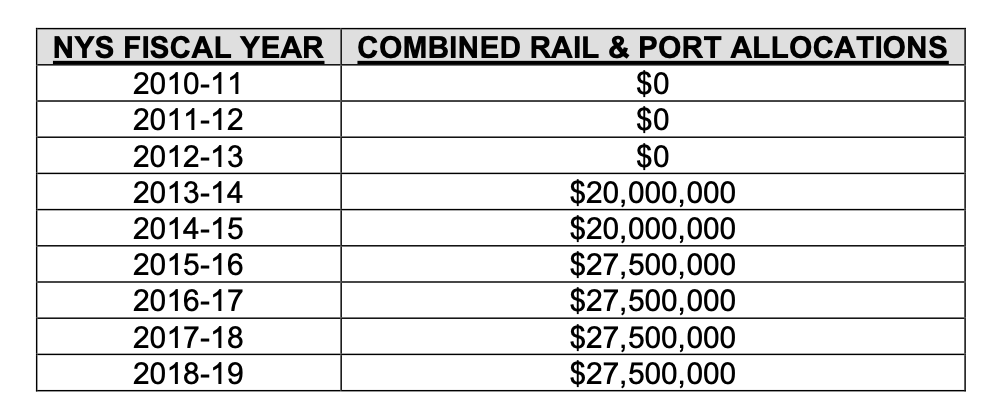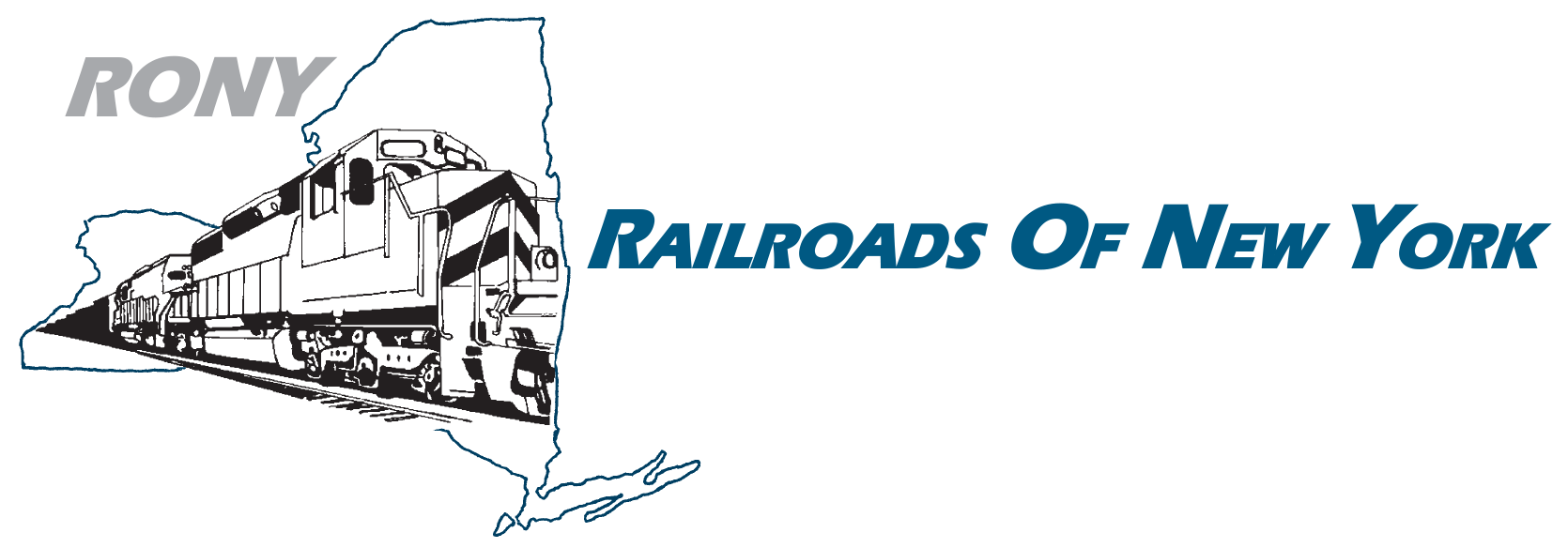RAILROADS OF NEW YORK, INC. (RONY) – TESTIMONY TO THE LEGISLATIVE FISCAL COMMITTEES
2019-20 TRANSPORTATION BUDGET HEARING JANUARY 30, 2019
Good afternoon. My name is Scott Wigger and I am the Executive Director for Railroads of New York (RONY), a statewide association that represents the freight rail industry in New York State.
RONY represents four Class I Railroads (CSX, Canadian National, Canadian Pacific and Norfolk Southern) and 36 Short Line and Regional Railroads that directly employ over 3,700 individuals in NYS. RONY’s member railroads provide access to the nation’s 140,000-mile freight rail network, enabling many of New York’s industrial, manufacturing and agricultural businesses to reach markets across the country and throughout the world via all U.S. ports and to realize a substantial competitive advantage over other businesses that lack access to the rail network. In addition to providing considerable economic benefits to the New York-based customers our railroad members service, freight rail is also the most environmentally- friendly way to move goods and products by land, as moving goods by freight rail reduces highway gridlock, lowers greenhouse gas emissions and reduces emissions of particulate matter and nitrogen oxides. In addition, freight rail is also the safest way to move freight by land, including transporting hazardous materials that are required by Federal law to be shipped by rail because of the safety benefits freight rail provides over other land-based modes of transportation.
Included in the Governor’s 2019-20 Executive Budget proposal is $17.5 million for freight rail infrastructure projects and a separate $10 million allocation for a mix of freight rail, passenger rail and port- related projects. On behalf of RONY and all of its members, I want to thank the Governor and Legislature for reestablishing and reinvigorating this important funding source for our state’s freight rail operators. Many of New York’s freight rail companies rely on these funds to maintain the state’s rail network in a state-of- good-repair and to remain economically viable in an increasingly competitive freight-based economy. As shown in the chart below, this vital funding source was eliminated in years 2010-12 when all rail funding was allocated towards high-speed rail initiatives.

As illustrated above, funding for this program has remained flat for the past four fiscal years. Going forward, RONY supports building on the recent success of this funding program and requests that NYS continue to enhance the program, bringing it to a $50 million annual level, the same level it was during the 2005-10 NYSDOT Bond Act period. This funding is key as rail freight volumes are expected to significantly increase over the next few decades, placing even more strain on the state’s freight rail network. According to a 2015 report issued by the U.S. Department of Transportation, rail freight demand is expected to increase by 49% by 2040.
To help illustrate the needs in the state’s freight rail network, the 2009 NYS Rail Plan issued by NYSDOT outlined the needed system investments by category totaling approximately $390 million per year over a five-year period (approximately $2 billion total), and over $5 billion over a 20-year period as follows:
 Freight railroads are the most environmentally-sound way to move freight over land. According to the Association of American Railroads, trains are four times more fuel efficient than trucks as they are able to move a ton of freight an average of 479 miles per gallon of fuel. With greenhouse gas emissions being directly related to fuel consumption, moving freight by rail instead of truck lowers greenhouse gas emissions by 75%. According to the U.S. Environmental Protection Agency, if just 10% of the freight that moves by the largest trucks moved by rail instead, fuel savings would be approximately 1.5 billion gallons per year and annual greenhouse gas emissions would fall by approximately 17 million tons, equivalent to removing approximately 3.2 million cars from the highways for a year or planting 400 million trees.
Freight railroads are the most environmentally-sound way to move freight over land. According to the Association of American Railroads, trains are four times more fuel efficient than trucks as they are able to move a ton of freight an average of 479 miles per gallon of fuel. With greenhouse gas emissions being directly related to fuel consumption, moving freight by rail instead of truck lowers greenhouse gas emissions by 75%. According to the U.S. Environmental Protection Agency, if just 10% of the freight that moves by the largest trucks moved by rail instead, fuel savings would be approximately 1.5 billion gallons per year and annual greenhouse gas emissions would fall by approximately 17 million tons, equivalent to removing approximately 3.2 million cars from the highways for a year or planting 400 million trees.
Freight rail is also the safest means of land transportation for moving goods and products. As a result of this, freight railroads are required by federal law to transport certain classifications of hazardous materials, including the most sensitive and potentially dangerous materials known as toxic inhalation hazard materials. All hazmat moved by rail reaches its destination without a release caused by an incident 99.999% of the time. This high success rate is attributable to the investments freight rail companies make in their systems to help ensure safety, including Positive Train Control which is designed to automatically slow or stop a train under certain circumstances to address a leading factor in train accidents – human error. In addition, in 2015, in conjunction with the freight rail industry, the U.S. Department of Transportation’s Pipeline and Hazardous Materials Safety Administration announced a series of new rules related to the safe transportation of flammable liquids by rail, including new and enhanced tank car design standards, new braking standards, new operational protocols such as routing requirements and speed restrictions, increased sharing of information with local government agencies, increased track inspections and increased trackside technology.
Further expanding this program will not only benefit our state’s freight rail companies that require this funding to make essential rail network improvements, it will also provide distinct benefits to the many industrial, commercial and agricultural businesses across the state that rely on the NYS freight rail network to ship and receive goods. Access to a safe, dependable rail network will not only help these customers move goods in a cost-effective manner, it will also help their bottom line and place them in a better position to expand operations and create jobs. This is particularly true for businesses that need to ship and receive goods over long distances.
RONY and its members look forward to continuing to partner with NYS and its many commercial, industrial and agricultural businesses to help grow the state’s economy and create jobs all across the state in the safest, most environmentally-friendly way possible. Thank you.
